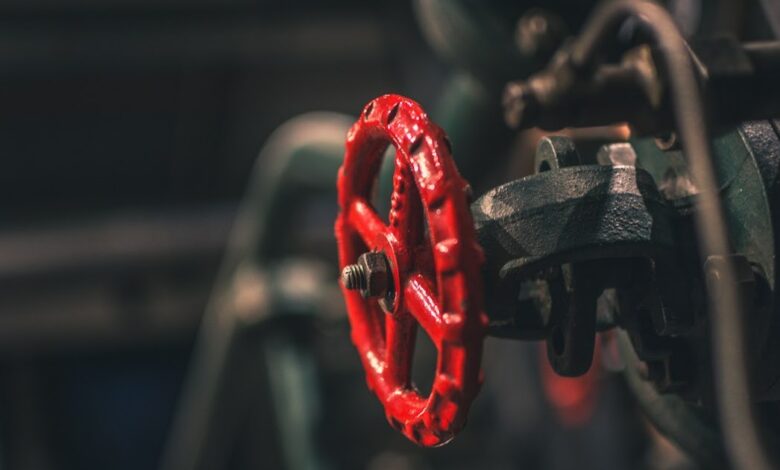Understanding the Basics of Reciprocating Compressor Maintenance – Business Tech World

Preventative maintenance is critical when it comes to industrial machinery. Good practice is even more essential for machinery such as reciprocating compressors, which play a vital role in many businesses. This article offers a guide on maintaining your reciprocating compressors to ensure optimal performance.
Understanding Reciprocating Compressor Maintenance
Quality maintenance of a reciprocating compressor begins with understanding how it works and the function of each part. Depending on the use and model, a compressor can have different needs and require different services.
Reciprocating compressor maintenance usually involves inspection, lubrication, cleaning, and component replacement. By keeping up with regular maintenance, you can reduce the risk of compressor failure and increase the machine’s overall efficiency.
Proper maintenance also means taking the necessary precautions to avoid common problems. From seal failures to overload trips, these issues can easily be prevented with the right maintenance regime.
An adequate maintenance schedule is also crucial. Depending on the kind of compressor, the frequency of maintenance may vary. Some businesses may rely heavily on their compressors and need monthly servicing, while others may only require servicing a few times a year.
Parts of a Reciprocating Compressor To Maintain
A compressor’s key parts that require maintenance include the valves, pistons, rings, and cooling system. Regular cleaning can prevent the build-up of dirt and debris, which can cause the machine to run inefficiently.
Valves and pistons often suffer wear and tear due to the compressor’s intense pressure. Regular inspections can help identify old parts before they lead to substantial problems. Replacing worn parts as needed can help maintain the compressor’s performance.
The compressor piston’s rings and seals play a crucial role in maintaining pressure. Therefore, they require regular inspection to ensure they are in good condition and replace them as necessary.
The cooling system, particularly in air-cooled compressors, also requires regular maintenance. Ensuring the system is efficient can help maintain the correct operating temperature and prevent overheating.
Tips for Routine Reciprocating Compressor Maintenance
One essential tip for routine maintenance is to keep a detailed record of each service performed. This can help monitor the compressor’s health, predict potential issues, and plan necessary maintenance.
Using the right kind of lubricant and checking it frequently is another critical maintenance aspect. Always check the manufacturer’s recommendations for appropriate lubricants, as using the wrong one can cause severe damage.
Listening to your compressor while it operates can also be helpful. Unusual noises could signal a problem, and prompt action can prevent a small issue from escalating into a significant problem.
Lastly, it’s essential to develop a regular maintenance schedule and stick to it consistently. Regular, planned maintenance can avoid unexpected and costly repairs.
Impact of Regular Maintenance on Compressor Efficiency

Regular maintenance can greatly improve a reciprocating compressor’s efficiency. Proper servicing ensures all components operate optimally, reducing energy consumption and thereby boosting efficiency.
On the contrary, lack of maintenance can lead to wear and tear, inferior performance, and ultimately, machine breakdown. A well-maintained compressor uses less energy, which ultimately saves costs.
Maintenance checks also help avoid downtime due to damaged parts or system failures. When preventative measures are taken, work processes are less likely to be interrupted, which contributes to having a more productive tool.
Finally, regular servicing provides peace of mind that your compressor is safe and fit for use. Over time, poorly maintained equipment can become hazardous, so regular checks promote safer operations.
Overall, understanding and implementing proper maintenance practices for reciprocating compressors are vital for enhancing equipment lifespan and safety. Utilize this basic guide to maintenance to ensure your compressors continue to run efficiently and safely. Don’t let a lack of maintenance impact your business.
https://blogger.googleusercontent.com/img/b/R29vZ2xl/AVvXsEgvJgH32HrxcMiBYGos0d7oCOqPdv4k-jpGX1Y3MAJnw6fT9ctOvejWkD4c6vR2QqepQ0myCaQo_lHrnC0fsQaq8wzEOwPV16LZ_zHpsh5btJHv7bGP2MD8mWO2D53erZ_tpQ5NJPAKdbXO6JZ0stDgSc4_Nn1oueir9diuuCi00U11ZqU-VmTqzyMYguA/w1200-h630-p-k-no-nu/11.jpg
2024-12-03 13:30:00





